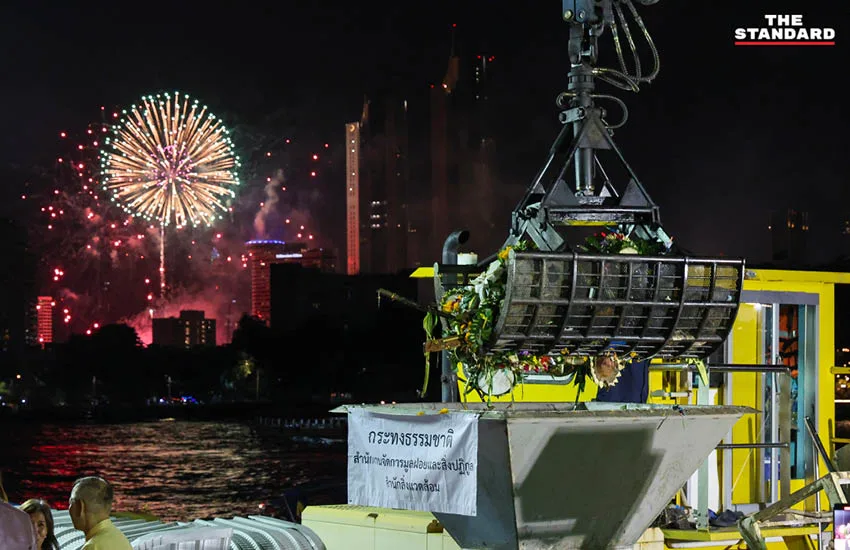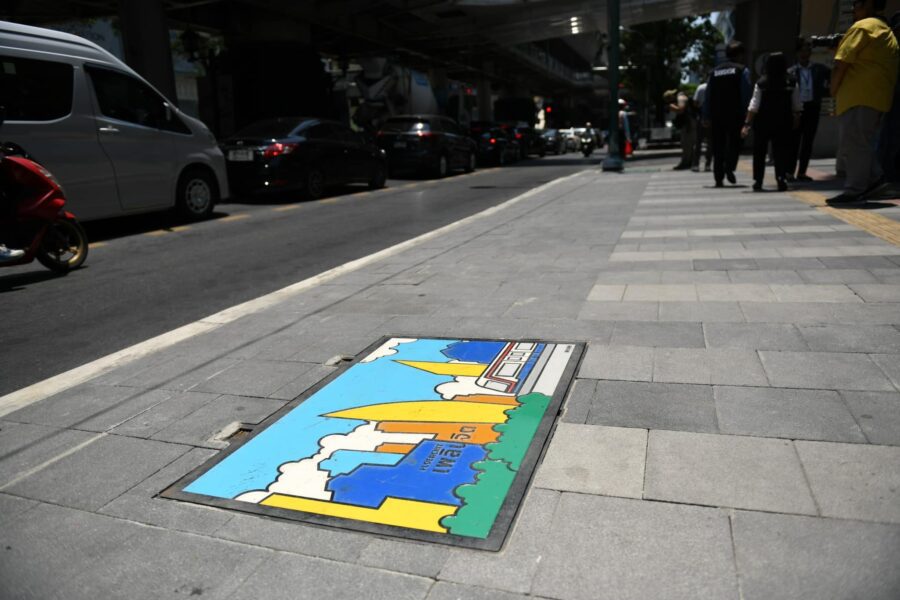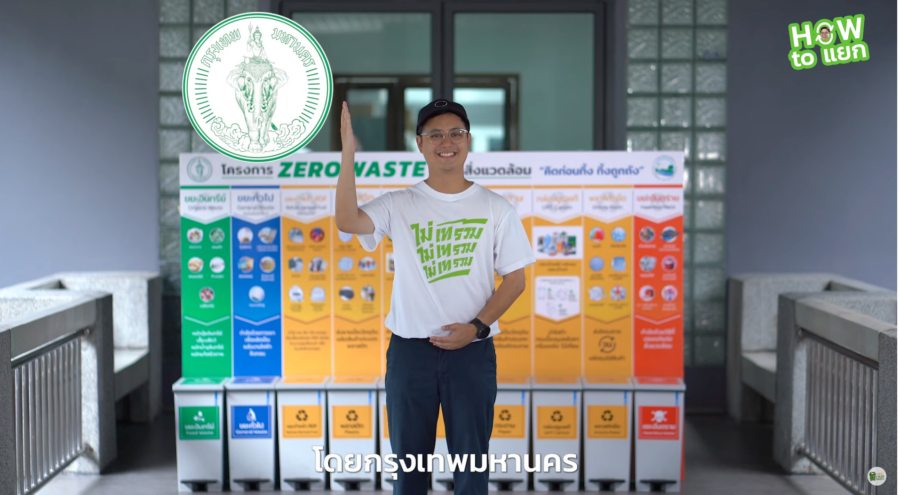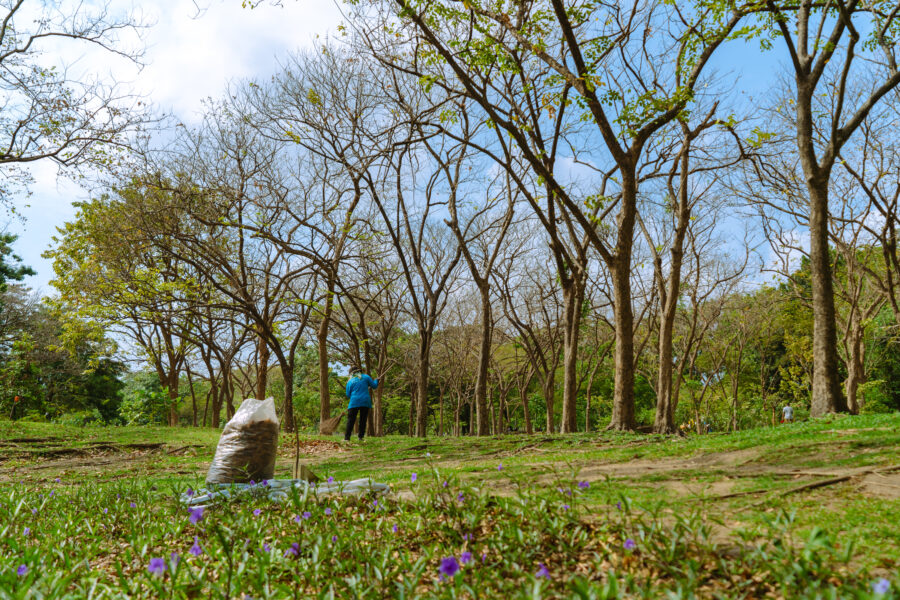By Natthanon Nakkhong
Festivals like Thai traditional festivals are something that we have held onto and practiced in society until they became traditions for people to follow for many generations. However, at present, they have severely impacted the environment because we do not consider the impacts that may occur during traditional events. This causes us to unknowingly destroy the environment, causing us to have to question these traditions: “Should we continue” to maintain good traditions or “should we stop here” to conserve the environment for us to continue on?
A major problem that impacts the environment is probably the “garbage” left behind after every festival, especially in a big city like Bangkok where hundreds of thousands of people participate, such as the “Loy Krathong” festival, which is considered to have the greatest impact on the environment. However, Loy Krathong events are still held every year. Today, we would like to invite everyone to learn about managing the garbage problem caused by Loy Krathong.

A beautiful tradition that has negative effects on the environment
We all know about Loi Krathong, which is the process of putting incense sticks and candles in Krathongs made from various materials such as natural materials, foam, bread, but most often made from banana trees and banana leaves, and then floating them in water sources to show gratitude and ask for forgiveness from the Goddess of Water for using water in human activities.
But on the 15th night of the 12th lunar month in 2023, after the night of Loi Krathong in Bangkok, even though it was a year when there were fewer krathongs made from foam and people turned to use materials that were environmentally friendly because people were more interested in the environment, these materials were not environmentally friendly because they could not naturally decompose. Krathong fragments floating in water sources would soon become waste that polluted water sources, affecting water quality, making the water dirtier, and in the worst case scenario, aquatic animals could not survive and might die.
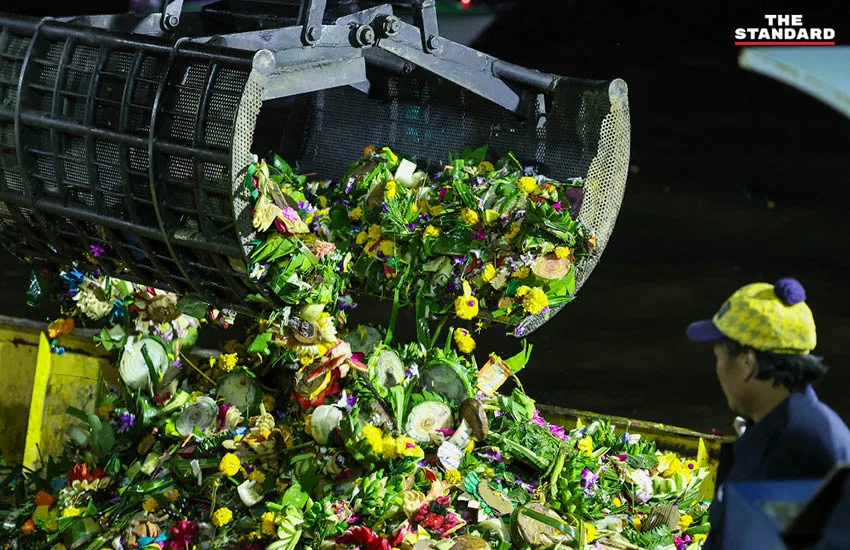
Just one night from 'Krathong' to 'Debris'
As soon as the krathong hits the water, it immediately turns into trash. In 2019, Bangkok organized the Loi Krathong festival in two main areas: Khlong Ong Ang in Phra Nakhon District and under Rama VIII Bridge in Bang Phlat District. It also opened 34 other public parks in Bangkok to use. This resulted in more than 639,828 krathongs of trash, an increase of 67,226 or 11.74 percent from 2018, when 572,602 krathongs were collected.
Of these, 618,951 were made from natural materials, such as banana stalks, banana leaves, cassava, bagasse, bread, etc., or 96.74 percent, and 20,877 were made from foam, or 3.26 percent. The number of krathongs made from natural materials increased from 95.70 percent to 96.74 percent, while the number of foam krathongs decreased from 4.30 percent to 3.26 percent.
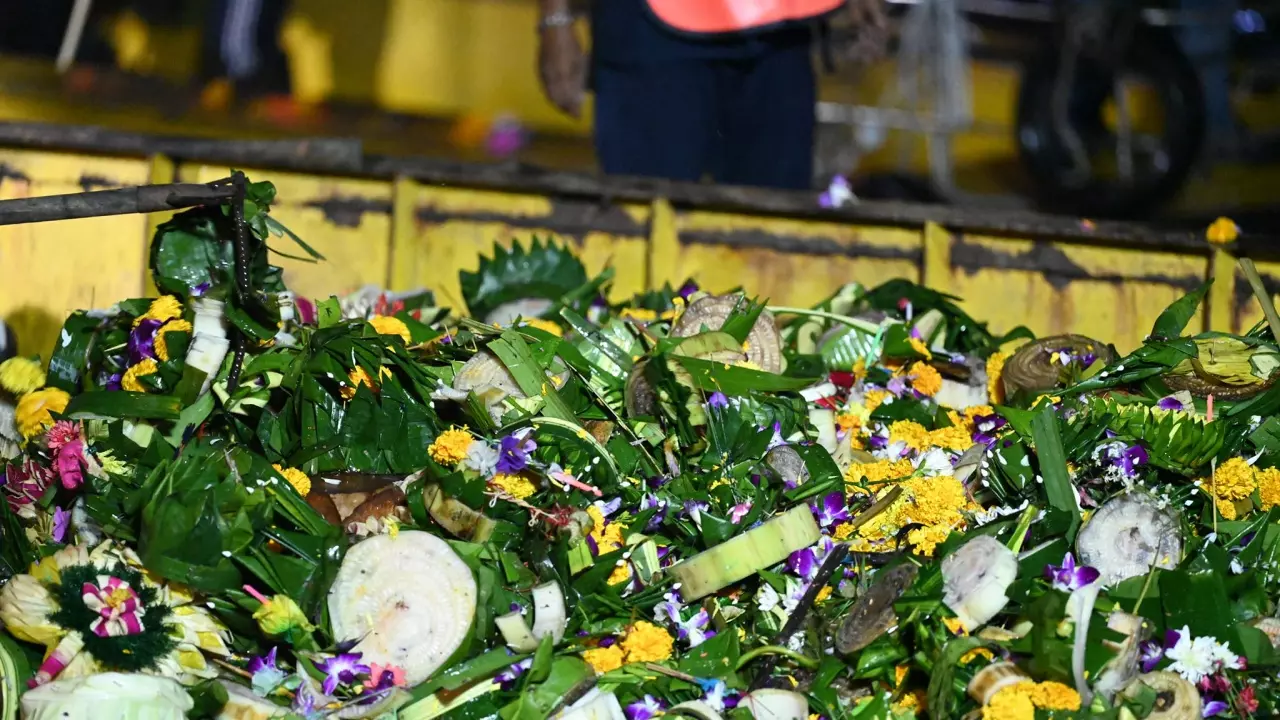
How to deal with the huge amount of Krathong (garbage)
Bangkok must mobilize both officers, equipment, and vehicles to collect Krathongs, sufficient to prevent them from remaining in water sources, and face obstacles such as lighting and a large amount of water hyacinth in the Chao Phraya River. Therefore, 168 officers, 31 garbage collection boats equipped with lighting, 2 weed transport and unloading boats, 1 weed collection and unloading boat, 1 weed sweeping boat, 2 patrol boats, 5 patrol cars, and 8 dump trucks are prepared to transport Krathongs to be properly organized.
The collected Krathongs will be sorted and sent to the three waste disposal centers for proper management: On Nut Waste Disposal Center, Sai Mai Waste Disposal Center, and Nong Khaem Waste Disposal Center. Krathongs made from natural materials and biodegradable materials will be sent to the organic fertilizer production plant. Foam Krathongs need to be sent to the landfill process.
Loi Krathong in the digital age can also continue the tradition.
Finally, even though there are a lot of Krathongs, with Bangkok's readiness in waste management, the Chao Phraya River can be returned to its original state. There is also a tendency to use less foam Krathongs due to more attention to the environment. However, "garbage is garbage", so no matter what type, it still wastes resources in collection. It must be brought into the correct sorting process and it also takes a long time to decompose.
So as the world moves forward, it is time to change to keep up with the world's trends. Online Loi Krathong is an interesting option that anyone can join, such as: Digital Loy Krathong Through Projection Mapping, which Bangkok organized for the first time at the annual Loi Krathong Festival 66 at Khlong Ong Ang, there were quite a few people interested in floating 3,744 krathongs, which is also a reduction in the amount of waste. Although it is not a lot compared to the krathongs in the river, it is a good start that will allow this good tradition to continue.
If the environment is destroyed by our own waste, how can we preserve our good traditions?
What I learned from Loi Krathong Festival
- Although it is undeniable that waste will be created after the traditional event, if the responsible agencies are well prepared, they will be able to manage that waste.
- Continuing Thai traditions does not necessarily have to stick to old methods, but can be adjusted to be in line with current trends, which can preserve both traditions and the environment at the same time.
Reference list
- THE STANDARD editorial team. (2023). Bangkok is accelerating the collection of annual Krathongs for 2023, sorting them and sending them for decomposition, returning them to their original environment in rivers and canals after the traditional festival. Retrieved from https://thestandard.co/bangkok-collect-krathong-garbage/
- Thanakrit Daengthongdee. (2022). When traditions are no longer good for the environment, it's time to decide whether to continue or stop.. Retrieved from https://www.seub.or.th/bloging/news/tradition/
- TODAY Writer. (2023). 'Krathong waste' in 2023, more than 630,000 pieces, an increase of 11.74% from the previous year. Retrieved from https://workpointtoday.com/trash-loykrathong/#google_vignette
- Thairath Online. (2022). Bangkok moves to collect Krathongs for proper disposal, preparing to report the total number of Krathongs collected in 2023. Retrieved from https://www.thairath.co.th/news/local/bangkok/2743938






